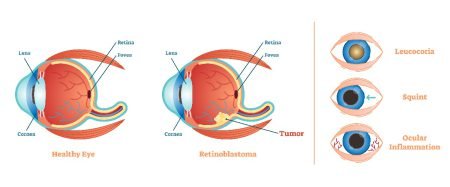Is It Gastroesophageal Reflux Disease (GERD) or Achalasia?
- Updated on: Jul 10, 2024
- 2 min Read
- Published on Feb 8, 2019

What is gastroesophageal reflux disease (GERD)?
Gastroesophageal Reflux Disease (GERD) is a long-term digestive disorder. GERD is a result of acidic reflux that occurs when stomach juices or food back up from the stomach into the esophagus. Some common symptoms of GERD are uncomfortable burning feeling from the chest to the neck or heartburn, acid reflux, regurgitation of foods or liquids from the stomach into the mouth, etc. GERD leads to a difficulty or pain in swallowing or breathing, etc.
GERD results in acidic flow-back up into the esophagus from the stomach. This acid causes irritation in the lining of the esophagus. GERD also leads to a narrowing of the esophagus, formation of ulcers in the esophagus or pre-cancerous changes in the esophagus. Read about esophageal cancer.
What is achalasia?
Achalasia is a serious condition that affects esophagus. The lower esophageal sphincter (LES) is a muscular ring that closes off the esophagus from the stomach. When someone gets achalasia, his/her LES fails to open during swallowing. This leads to a backup of food in the esophagus. Read more about achalasia.
Differentiating gastroesophageal reflux disease from achalasia
Indigestion and difficulty in swallowing are common symptoms in both achalasia and gastroesophageal reflux disease. During early stages of achalasia, chest pain, heartburn, regurgitation, etc are common signs which can be misinterpreted as symptoms of GERD. A study reveals that more than 36 percent of achalasia patients have been mistreated as GERD patients.
One major difference between achalasia and GERD is in the mechanism of how the lower esophageal sphincter works. Lower esophageal sphincter (LES) is a circular ring-like band of muscle which is present at the end of the esophagus where it joins the stomach. It works like a valve as it relaxes and opens while eating food and tightens or closes as the food reaches the stomach.
In case of a gastroesophageal reflux disease, the lower esophageal sphincter is not able to close at the right time but in achalasia, the lower esophageal sphincter doesn’t open at all when needed. This leads to acidic reflux in both conditions.
Due to similar symptoms, achalasia is often misunderstood as GERD. These conditions can be better understood through self-examination. If a patient feels that the food is reverting upwards after swallowing and resulting in acidic reflux, it is GERD possibly. But if, while swallowing, the food gets stuck into the esophagus, the chances of achalasia and even esophageal cancer are higher. Sometimes, acidic reflux does not allow food to move down.
In a study titled, “Is Gastroesophageal Reflux Disease and Achalasia Coincident or Not?”, it was stated that achalasia and GERD are completely opposite in terms of LES dysfunction. Achalasia involves hypertensive LES and leads to impaired relaxation in response to swallowing of food. In gastroesophageal reflux disease, the LES can either display frequent relaxations or be hypotensive. The inappropriate functioning of LES in achalasia forms a barrier to the reflux of gastric contents which is not the case in GERD. Due to these reasons, it is difficult to say whether achalasia and GERD co-exist or whether one disease leads into the other.
Are achalasia or GERD co-dependent conditions?
Many reports have concluded that GERD and achalasia are two independent diseases which are connected with each other. Heartburn results from dysmotility of achalasia which reflects an association with GERD. It was also found in various studies that patients have very high chances of experiencing acid reflux if achalasia is left untreated. Abnormal retention of food leads to esophagitis which may also be counted as a symptom of GERD in patients with achalasia.











